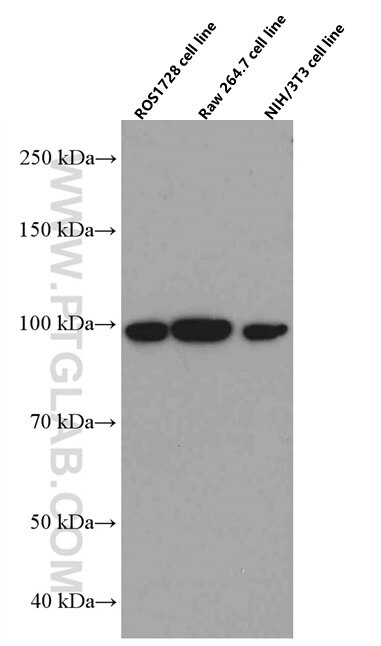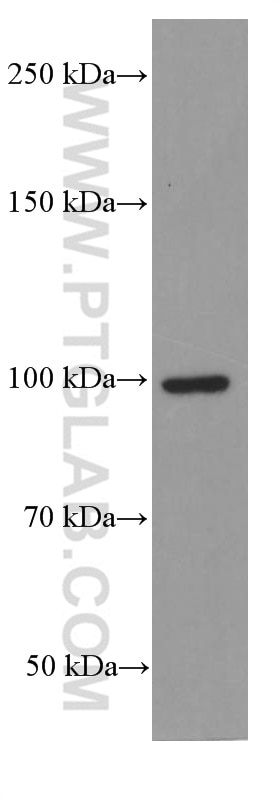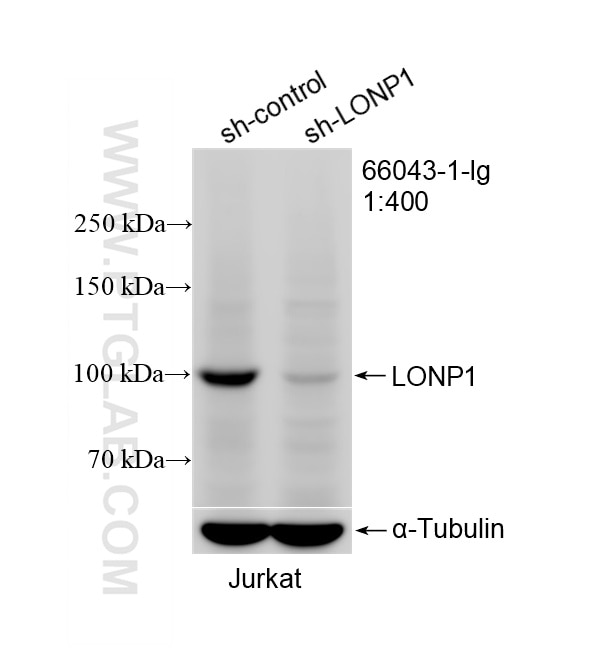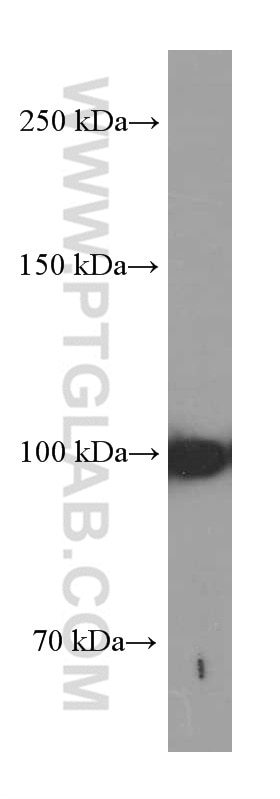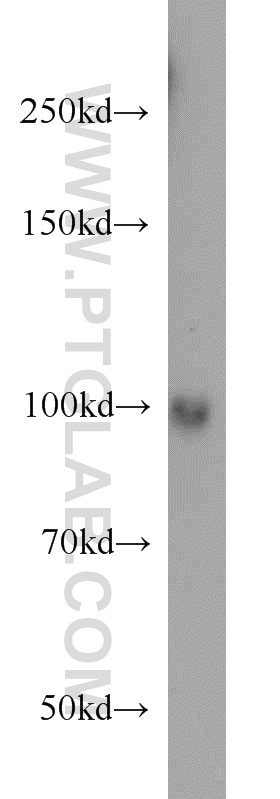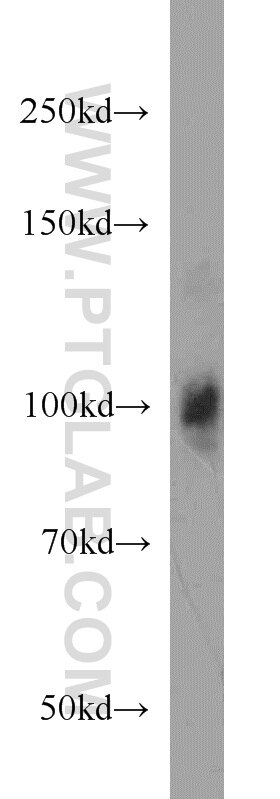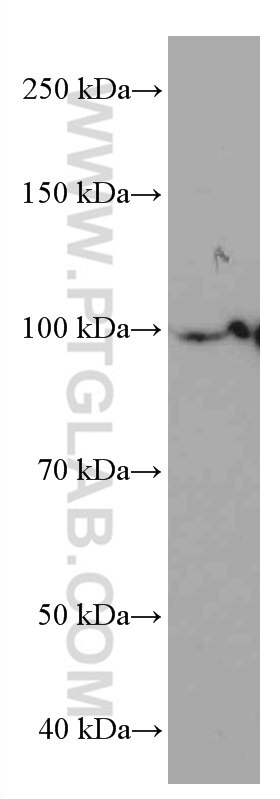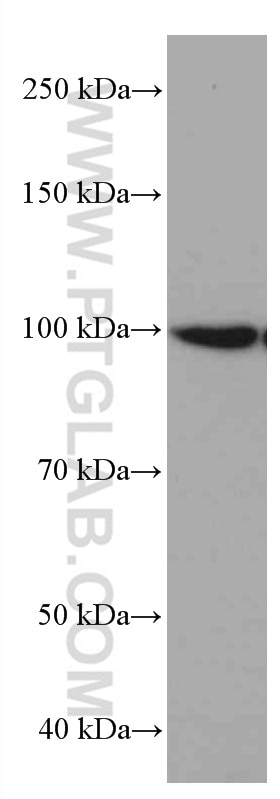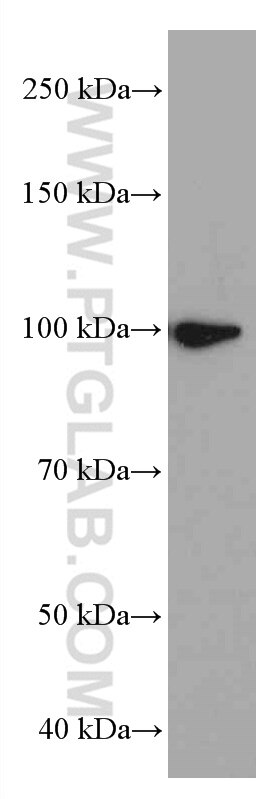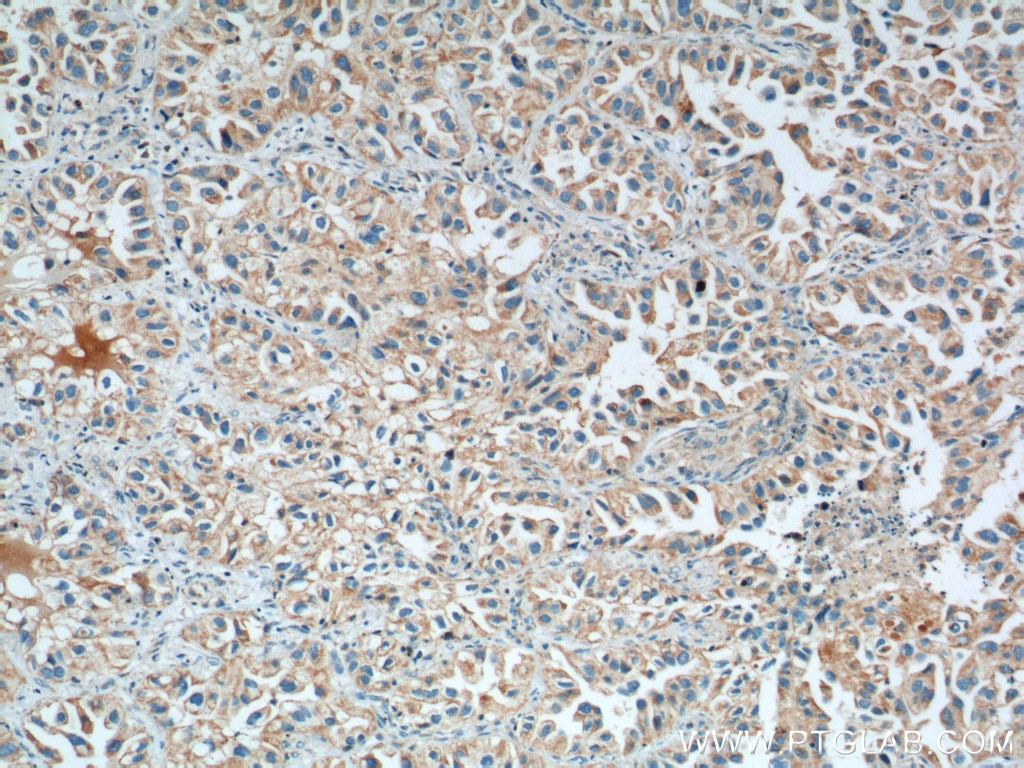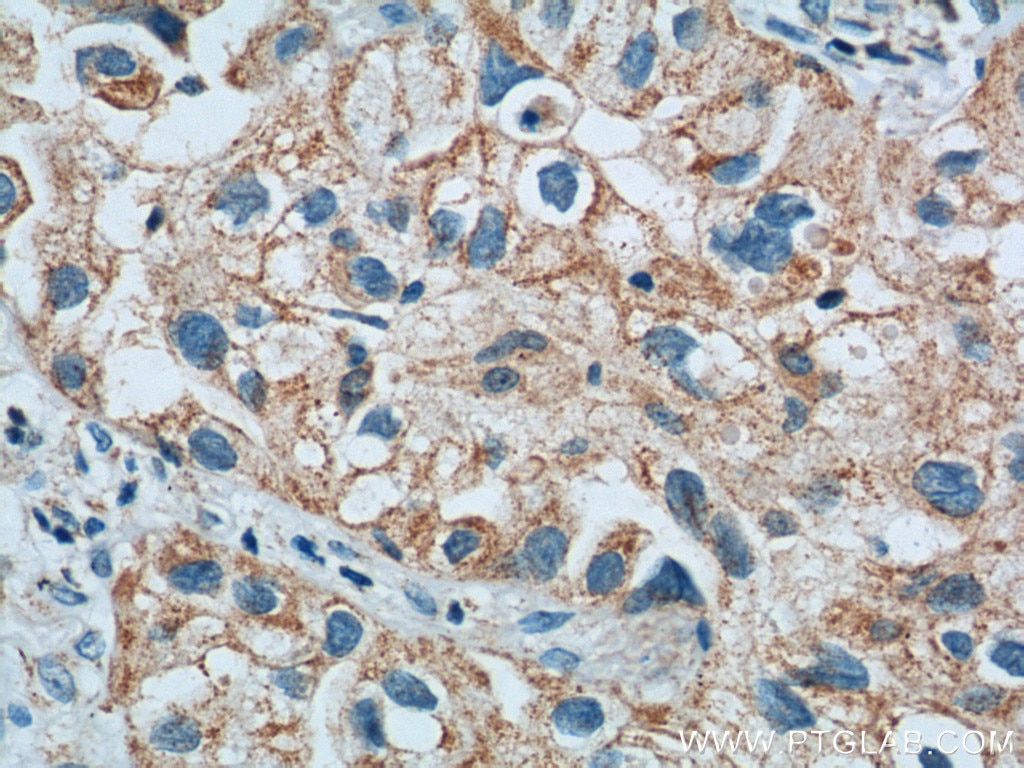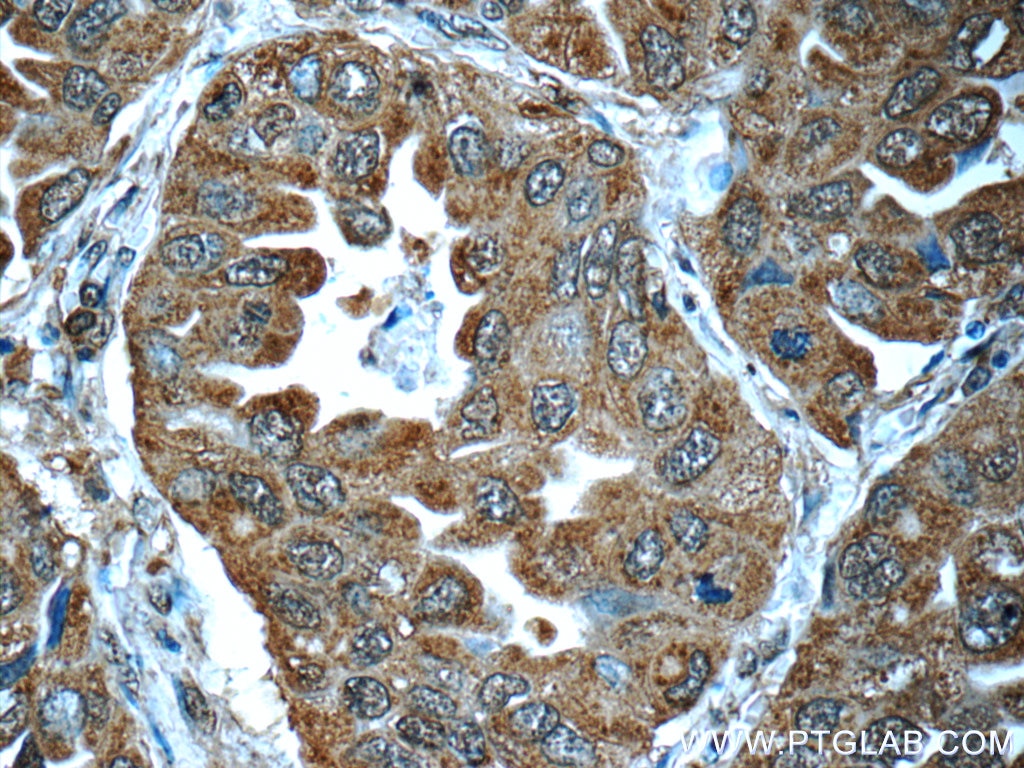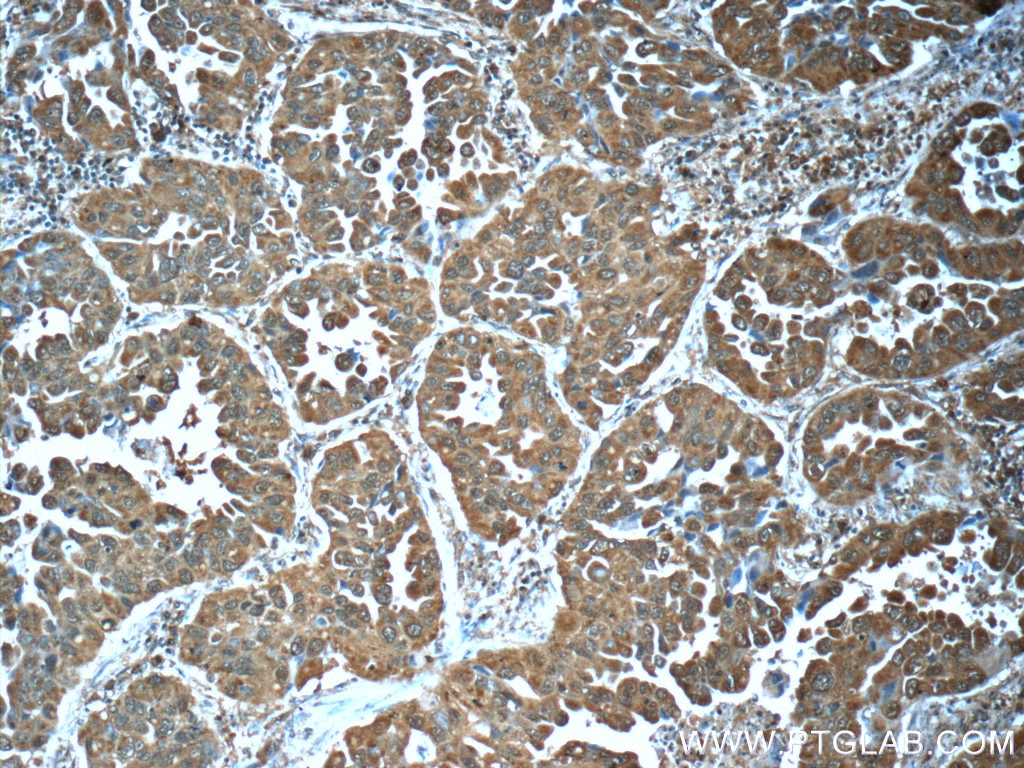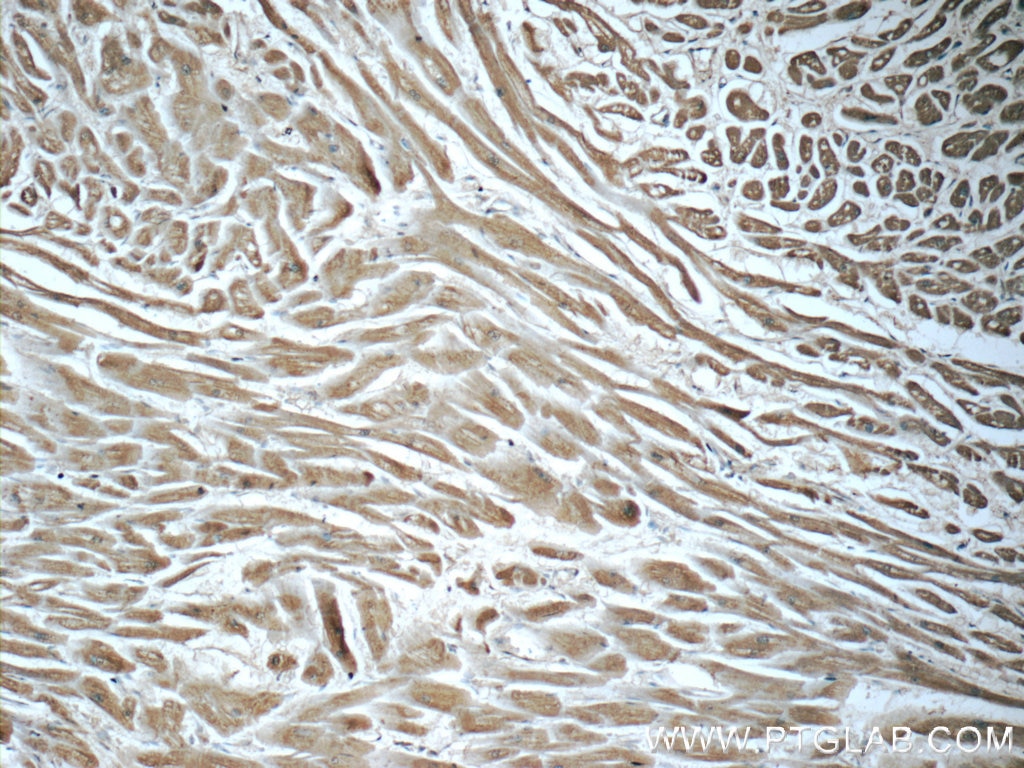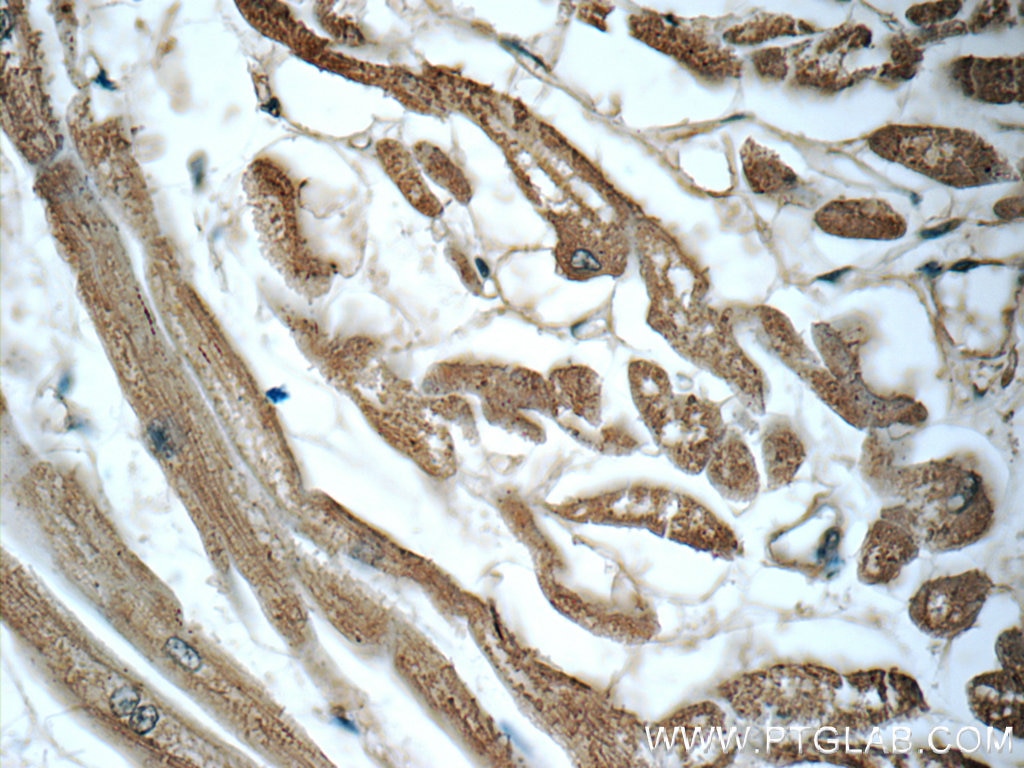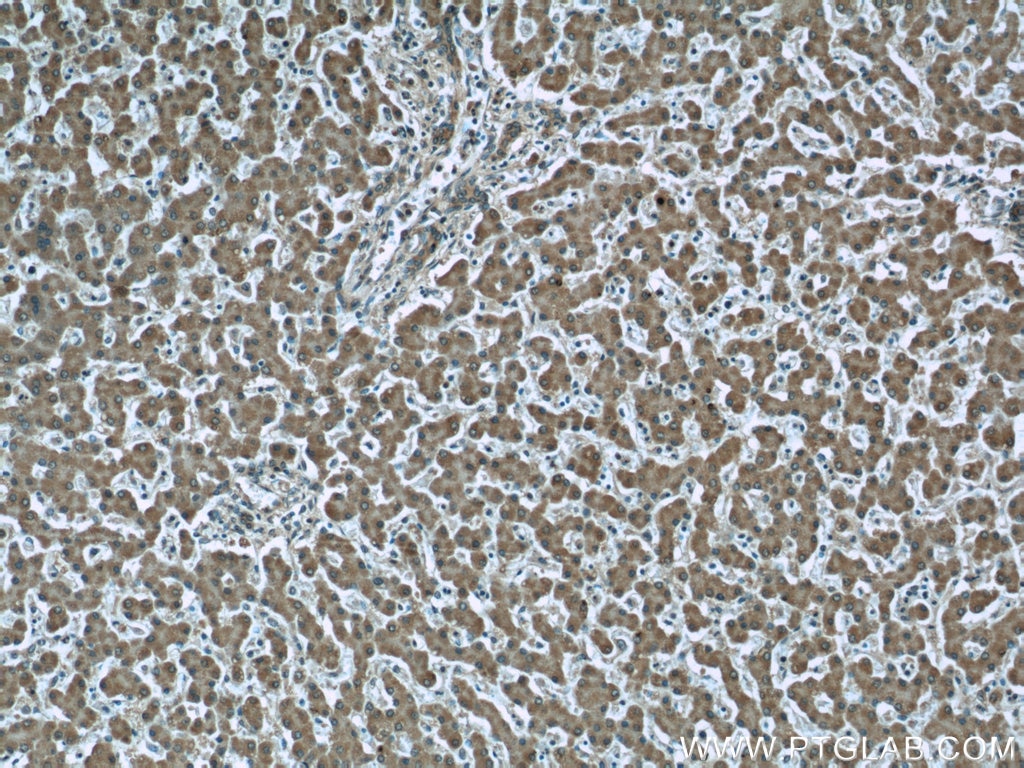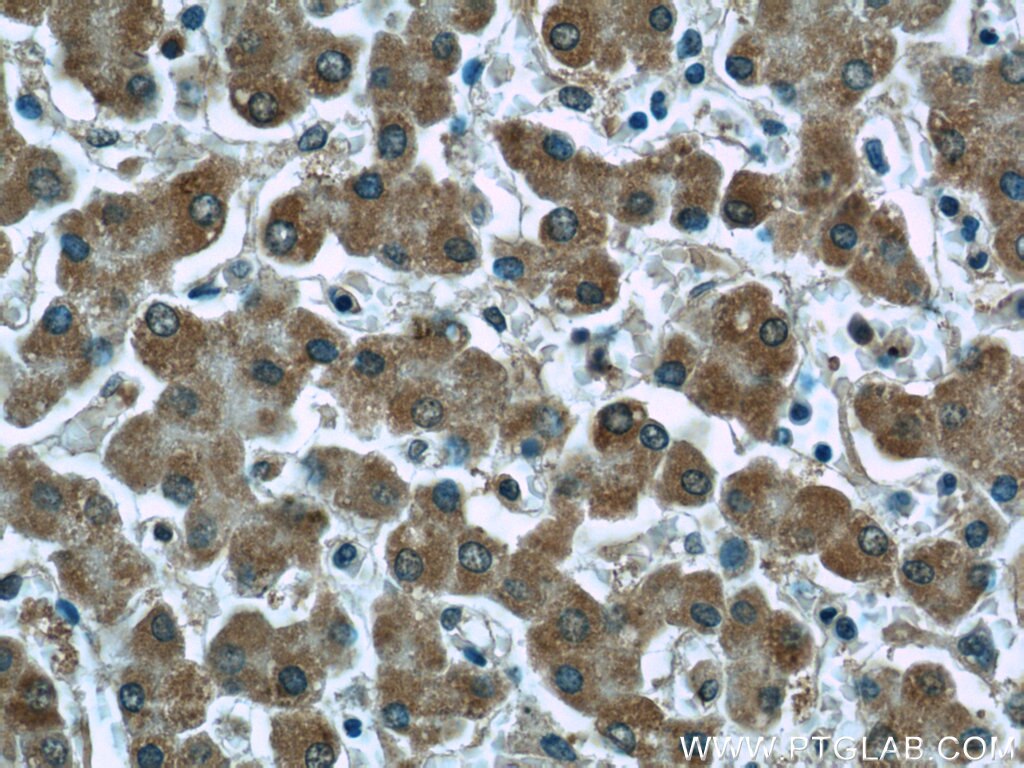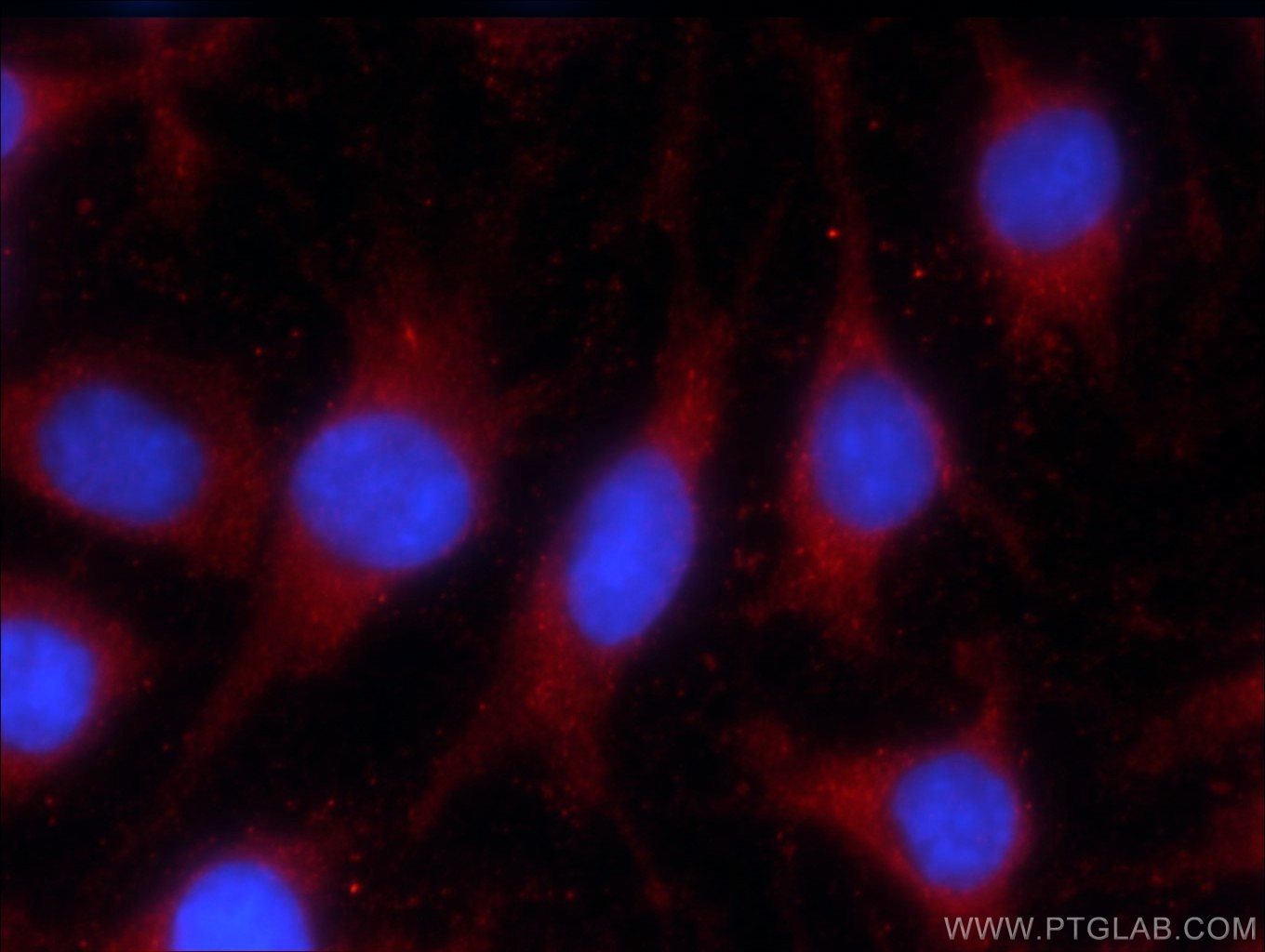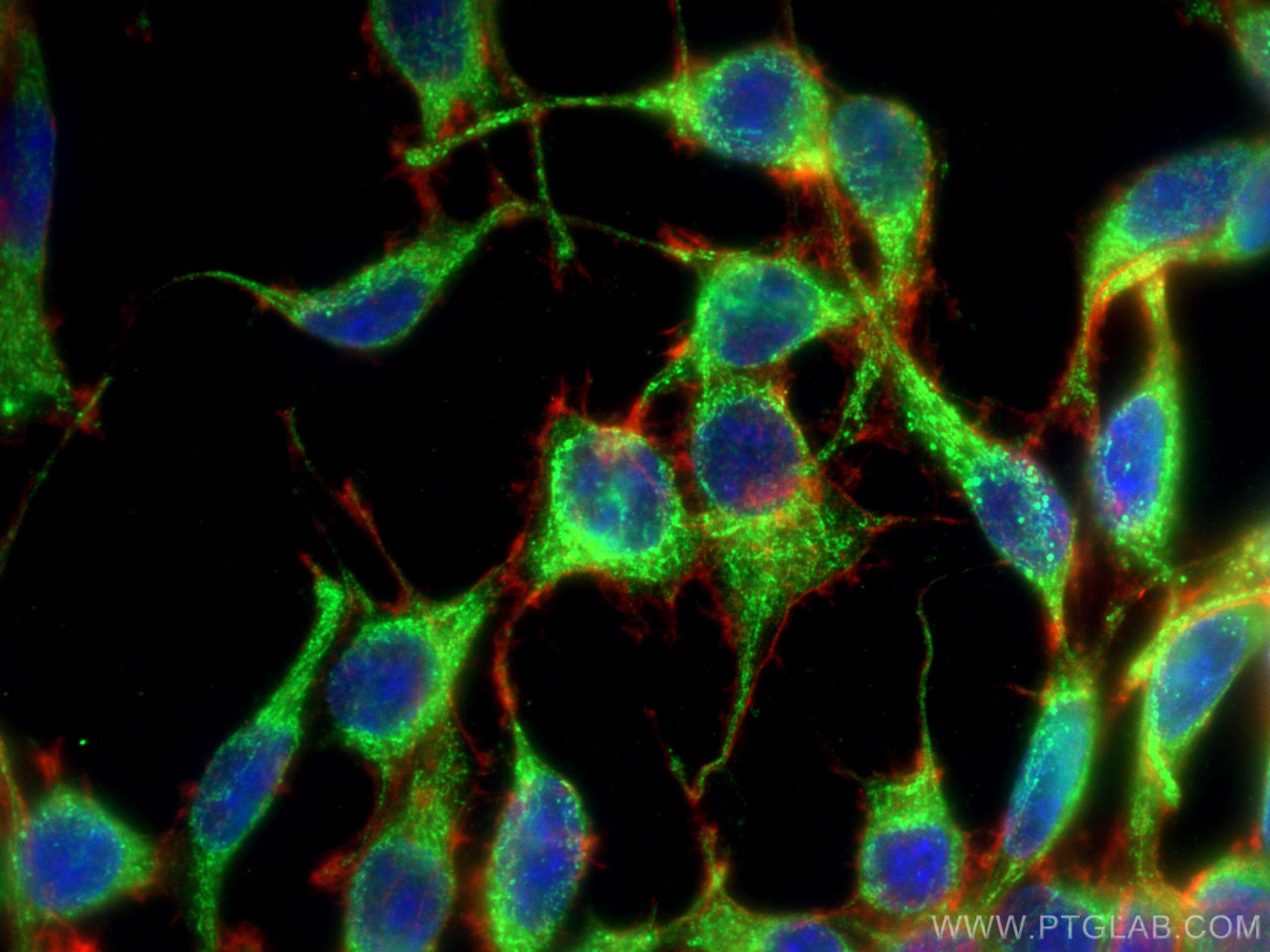Validation Data Gallery
Tested Applications
| Positive WB detected in | ROS1728 cells, HEK-293 cells, HSC-T6 cells, human heart tissue, human liver tissue, Jurkat cells, L02 cells, RAW 264.7 cells, NIH/3T3 cells |
| Positive IHC detected in | human lung cancer tissue, human heart tissue, human liver tissue Note: suggested antigen retrieval with TE buffer pH 9.0; (*) Alternatively, antigen retrieval may be performed with citrate buffer pH 6.0 |
| Positive IF/ICC detected in | C6 cells |
Recommended dilution
| Application | Dilution |
|---|---|
| Western Blot (WB) | WB : 1:1000-1:5000 |
| Immunohistochemistry (IHC) | IHC : 1:400-1:1600 |
| Immunofluorescence (IF)/ICC | IF/ICC : 1:50-1:500 |
| It is recommended that this reagent should be titrated in each testing system to obtain optimal results. | |
| Sample-dependent, Check data in validation data gallery. | |
Published Applications
| KD/KO | See 1 publications below |
| WB | See 10 publications below |
| IHC | See 3 publications below |
| IF | See 2 publications below |
| CoIP | See 1 publications below |
Product Information
66043-1-Ig targets LONP1 in WB, IHC, IF/ICC, CoIP, ELISA applications and shows reactivity with human, mouse, rat samples.
| Tested Reactivity | human, mouse, rat |
| Cited Reactivity | human, mouse, rat |
| Host / Isotype | Mouse / IgG1 |
| Class | Monoclonal |
| Type | Antibody |
| Immunogen |
CatNo: Ag7306 Product name: Recombinant human LONP1 protein Source: e coli.-derived, PET28a Tag: 6*His Domain: 614-959 aa of BC000235 Sequence: EQNANFLDHYLDVPVDLSKVLFICTANVTDTIPEPLRDRMEMINVSGYVAQEKLAIAERYLVPQARALCGLDESKAKLSSDVLTLLIKQYCRESGVRNLQKQVEKVLRKSAYKIVSGEAESVEVTPENLQDFVGKPVFTVERMYDVTPPGVVMGLAWTAMGGSTLFVETSLRRPQDKDAKGDKDGSLEVTGQLGEVMKESARIAYTFARAFLMQHAPANDYLVTSHIHLHVPEGATPKDGPSAGCTIVTALLSLAMGRPVRQNLAMTGEVSLTGKILPVGGIKEKTIAAKRAGVTCIVLPAENKKDFYDLAAFITEGLEVHFVEHYREIFDIAFPDEQAEALAVER 相同性解析による交差性が予測される生物種 |
| Full Name | lon peptidase 1, mitochondrial |
| Calculated molecular weight | 106 kDa |
| Observed molecular weight | 100 kDa |
| GenBank accession number | BC000235 |
| Gene Symbol | LONP1 |
| Gene ID (NCBI) | 9361 |
| RRID | AB_2881494 |
| Conjugate | Unconjugated |
| Form | |
| Form | Liquid |
| Purification Method | Protein G purification |
| UNIPROT ID | P36776 |
| Storage Buffer | PBS with 0.02% sodium azide and 50% glycerol{{ptg:BufferTemp}}7.3 |
| Storage Conditions | Store at -20°C. Stable for one year after shipment. Aliquoting is unnecessary for -20oC storage. |
Background Information
LONP1(Lon protease homolog, mitochondrial) is also named as LONP, LONHS, HLON, LON, PRSS15, PIM1, MGC1498 and belongs to the peptidase S16 family. It seems to play a major role in the elimination of oxidatively modified proteins in the mitochondrial matrix(PMID:18021745). LONP1, also a nuclearly encoded and mitochondrially located stress-responsive protease, is involved in heme-mediated ALAS-1 turnover(PMID:21659532). It recognizes specific surface determinants or folds, initiates proteolysis at solvent-accessible sites, and generates unfolded polypeptides that are then processively degraded(PMID:15870080).
Protocols
| Product Specific Protocols | |
|---|---|
| IF protocol for LONP1 antibody 66043-1-Ig | Download protocol |
| IHC protocol for LONP1 antibody 66043-1-Ig | Download protocol |
| WB protocol for LONP1 antibody 66043-1-Ig | Download protocol |
| Standard Protocols | |
|---|---|
| Click here to view our Standard Protocols |
Publications
| Species | Application | Title |
|---|---|---|
Acta Pharm Sin B Miriplatin-loaded liposome, as a novel mitophagy inducer, suppresses pancreatic cancer proliferation through blocking POLG and TFAM-mediated mtDNA replication | ||
Dev Cell HMOX1-LDHB interaction promotes ferroptosis by inducing mitochondrial dysfunction in foamy macrophages during advanced atherosclerosis | ||
Mol Med ATF5 regulates tubulointerstitial injury in diabetic kidney disease via mitochondrial unfolded protein response | ||
J Cell Mol Med LONP1 alleviates ageing-related renal fibrosis by maintaining mitochondrial homeostasis | ||
J Physiol Biochem PGC-1α activation boosts exercise-dependent cellular response in the skeletal muscle |

